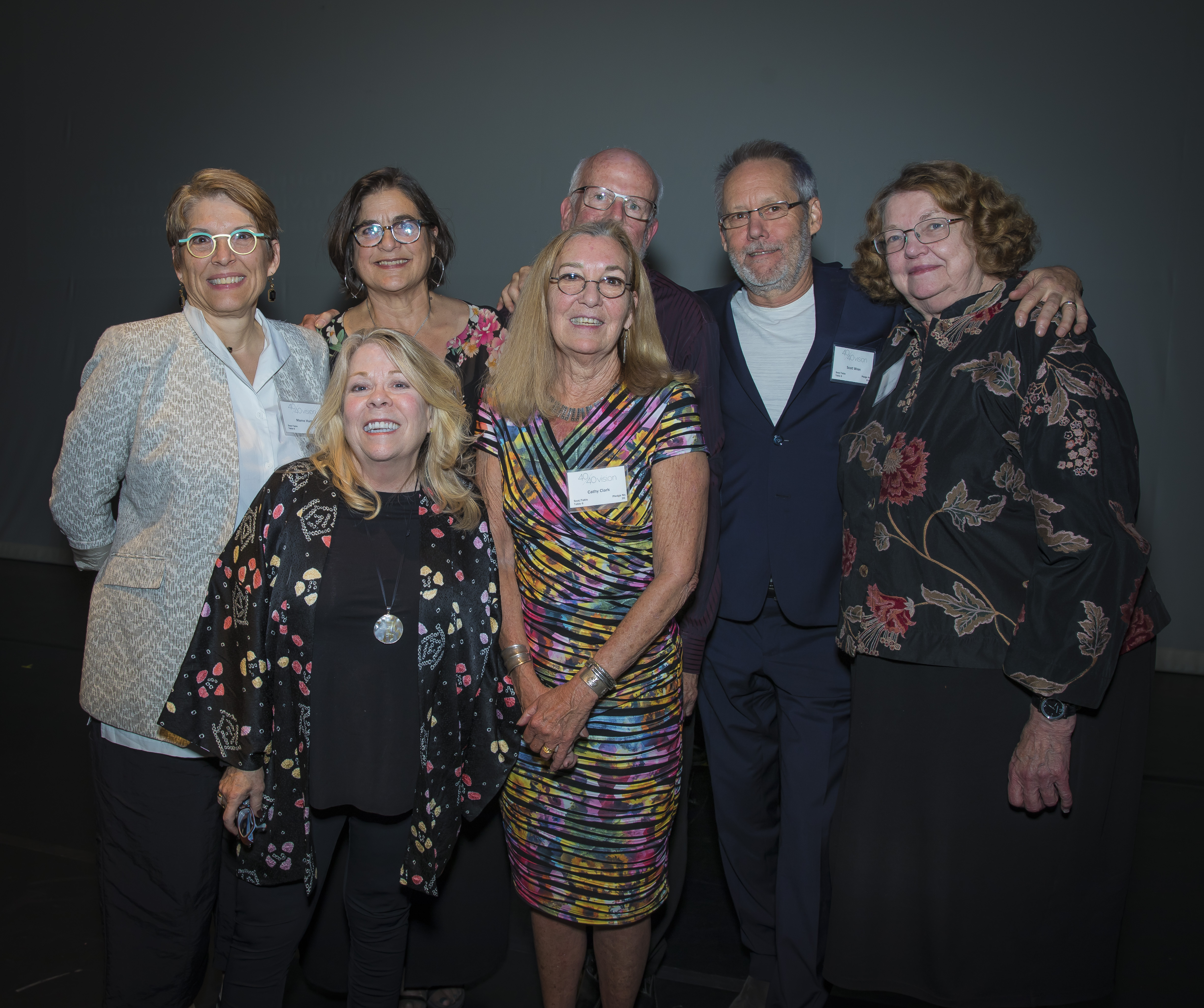
04 Feb The Role of the Artist: Reflecting on Chisa Hutchinson’s “The Subject”
The thing I love about live theatre that you just don’t get from film is a pure, unadulterated connection with the piece and the actors. The best thing about a new play like we have at our ROUGH Readings is the ability to have that connection, then talk to the playwright and learn their intention, and get a whole new level of connection as questions are raised.
This seems a little late as the reading of Chisa’s The Subject happened last month (Jan 24, and 25) but its had some time to sit in my mind and ferment a bit, especially since I sat onstage reading the stage directions through a two long days of rehearsal and two public readings. The play centers around Phil Waterhouse, a famed documentarian who learns the effect of being an objective eye.
You see, it was during rehearsal on that Sunday night, that Chisa asked the cast a question to help them understand it more, and I have to say that it’s something that has truly stuck with me. She explained that the play was partially inspired by the story of the late South African photojournalist and Pulitzer Prize winner, Kevin Carter. If you don’t know his name, I’m sure you’ve seen his work. You see, the reason he won the Pulitzer is because of a photo he took of a toddler in Sudan – you’ve probably seen it. A small child, completely emaciated, struggling to stand, and a vulture looming close in the background. This haunting image has been used countless times since it was shot in March, 1993. While the fate of the child is unknown, we do know that Carter suffered at the hands of the vulture. Not physically, no, but just months after winning the Pulitzer, he took his own life, citing the haunting images he immortalized as a reason for the act.
Chisa asked the actors one of the most important questions I’ve ever heard in my life, and I wish I had asked myself: “What is our duty as artists?”

MIND BLOWN!
(MUCH more after the jump)
How could I have never thought of something like this before?! My mind was blown. Now, I’ve gotten some good advice from various artists and art forms before. “Measure your life in love” from RENT; British folk singer Frank Turner once said “Life is about love, last minutes, and lost evenings; about fire in our belies and furtive little feelings, and the aching amplitudes that set our needles all a-flickering, and help us with remembering that the only thing that’s left to do is live.” What about the timeless Toy Story (so what, I’m still a kid) saying, “To infinity, and beyond“? I’ve even gotten personal advice from DC based actor, Ian Peakes, on the subject of getting jobs as an young actor, “accept everything… except heroin on a switchblade.” Although… I’m still trying to remember how that was relevant.
But none of these made me think this much. Where do we draw lines? I know as a playwright the things I try to say with my words. I write them very specifically and know what I want to get a point across. Chisa mentioned that people will often criticize the third party observer – the documentary filmmaker, or the photojournalist who just observe, report, and otherwise do nothing about it. And that’s true that people will say “why didn’t you do anything?!” But we have to then think about what the critics are doing. They aren’t there taking pictures, writing plays, songs, movies, paintings, or stories about this. Maybe that’s the way the artist does something about it. We tell the world what’s going on. People have had enough of those on the streets yelling in your face saying “buy this,” or “support us.” Maybe the artist has found the best medium, and it’s our way.
Then again, on the critics side of things, is that enough? Should the artist become directly involved – get our hands dirty? It seems like, in the situation of Phil sometimes it isn’t always an option. We have to remain subjective. A third party. An eye, and a voice, but never an actual being.
Personally, I feel as artists, we are exactly that – the conduit from which the world learns about itself. Photojournalists, graffiti artists, and playwrights are all one in the same. Let me clarify. My best friend is a photographer. She’s quite good at it, and it going to school for it currently, but she doesn’t think her photos are anything special. She also happens to be going through a period of self-actualization and great change right now (think a butterfly, only mentally), so as I’m there for her like any friend, I suggest things that I think may help her. One of my many gems include the suggestion that she 1. starts to carry her camera everywhere, because what’s a photographer that isn’t ready for spontaneous art; 2. start seeing things as art, rather than assignments – she has gotten too caught up in school, and rather than finding the assignment in the photos she has, she goes looking for the assignment; and 3. say something through her photos – something about her, her beliefs, and her stances. Hey, maybe these seem like no-brainers to you, but some people need reminders that art isn’t just scribbling on the wall.
Which brings me to why I said graffiti artists. I’m not saying I know anyone who writes graffiti, or that I’ve done it myself, but I’m not saying I don’t know, or haven’t done it. Vague, and confusing, isn’t it? That’s the point, sometimes. Graffiti is the most basic form of anarchy. “Bombs,” those scribbled names on the sides of buildings, are just that – bombs to the establishment. It’s discord. It’s saying “there’s something wrong with this system, and we are here to put even the smallest wrench in the cogs of your machine, even if it only stops it for a split second.” Sometimes they say something like an inspirational saying, or image, but sometimes it’s just a name of the artist. The point of that is to spread your name (which usually has a deeper political meaning than perceived) all over and to tell ‘the machine’ that “I’m in every major city, and I’m spreading my word. And you have to clean it up.”
Which brings me to the spray-can that I use for my graffiti – my keyboard, and the wall on which I use to tear down the machine with which I disagree – my pages. The playwright should tell something about the world. Even in absurdist, surrealist, expressionist, melodramatic, or dadaist plays should something be said, even if it can’t be seen without tearing the story apart like a giant onion. I can find as much political or social weight in Chekhov’s The Cherry Orchard, and even Oklahoma! as I do Churchill’s Drunk Enough to Say I Love You, or Camus’ Caligula, which are rich in meaning.
Art has meaning, always, no matter how the interpreter sees it. It’s the artists weapon; the artists voice; the artists change. It’s how we plan on changing the world.
I open it to you, the few readers we have, and those who stumble our way: what is the duty of the artist?
-Vinny, the intern…. The Vintern.
Chisa Hutchinson’s The Subject was produced as part of our ROUGH Reading series at Stanford University and The Thick House, January 24 and 25 (respectively). Our next ROUGH Reading is Jason Grote’s Darwin’s Challenge, March 7 & 8. Come watch, listen, and more importantly THINK.


No Comments